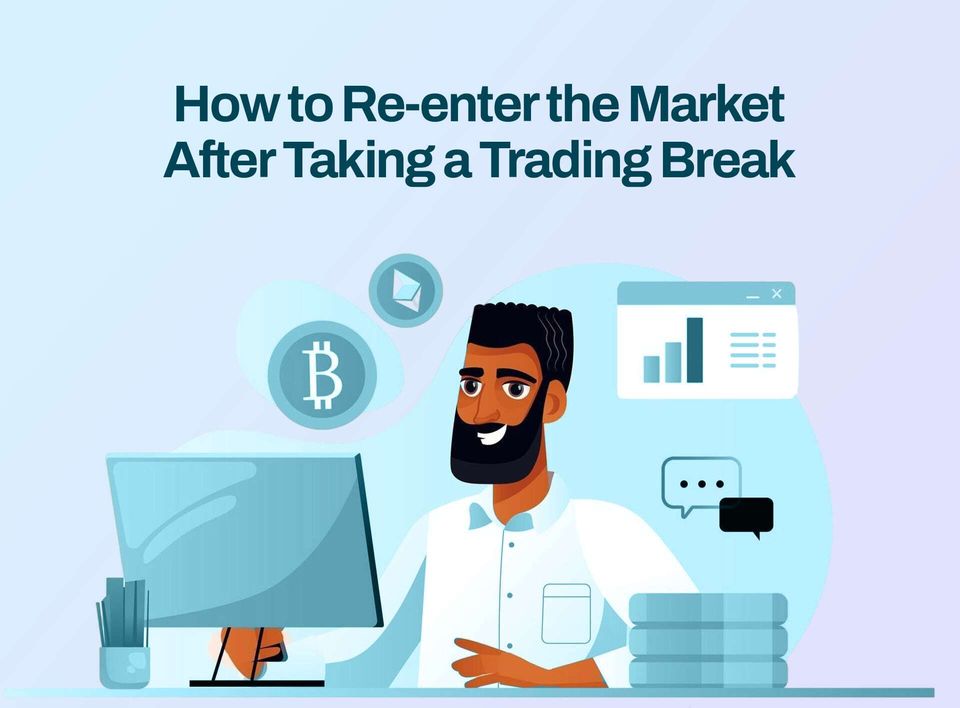How FUD Affects the Crypto Market
FUD is an acronym that stands for Fear, Uncertainty, and Greed. These emotions are pivotal in driving crypto market trends and can often lead to unpredictable price swings.

TABLE OF CONTENT:
1. Introduction
2. Understanding FUD
3. Fear and Its Effects on Crypto
4. Uncertainty and Its Effects on Crypto
5. Greed and Its Effects on Crypto
6. The Psychology Behind FUD
7. Impact of Market Metrics
8. Managing FUD in Crypto Trading
9. Case Studies
10. The Future of FUD in Crypto
11. How the Market Might Evolve in Managing FUD
12. Closing Thoughts
13. FAQs
The world of cryptocurrencies is often characterized by wild price swings and seemingly irrational market behavior.
At the heart of these fluctuations, we have three powerful emotions: Fear, Uncertainty, and Greed, collectively known as FUD.
FUD plays a significant role in shaping the crypto market, impacting seasoned traders and newcomers. In this article, we'll explore FUD and how it affects the world of digital currencies.
Understanding FUD
FUD is an acronym that stands for Fear, Uncertainty, and Greed. These emotions are pivotal in driving crypto market trends and can often lead to unpredictable price swings.
Before we dive deeper, it's crucial to understand why FUD matters in the crypto market.
Even though cryptocurrencies have been around for slightly over a decade, they are still a new asset class. Unlike traditional financial markets, they lack established regulations and are influenced to a large extent by sentiment and perception.
FUD can lead to rapid price fluctuations, causing traders to make impulsive decisions resulting in massive profits or painful losses.
Fear and Its Effects on Crypto
Fear is a primal human emotion that plays a pivotal role in the crypto market. When negative news or events occur, fear can spread like wildfire among investors. This fear can be triggered by regulatory crackdowns, security breaches, or market crashes. The psychological impact of fear often leads to panic selling, which, in turn, drives down cryptocurrency prices.
Real-Life Examples of Fear-Driven Crypto Market Movements
To illustrate the power of fear in the crypto market, let's look at a real-life example. In 2017, China banned Initial Coin Offerings (ICOs) and cryptocurrency exchanges. This news sent shockwaves through the crypto community, causing Bitcoin's price to plummet by over 40% in just a few days. Fear-induced sell-offs can create opportunities for savvy investors but also result in significant losses for those who panic and sell their assets at the wrong time.
Uncertainty and Its Effects on Crypto
Uncertainty is another potent force in the crypto market. It stems from various sources, including confusing regulations, technological developments, and market sentiment.
Uncertainty can make investors hesitant to buy or sell, leading to market stagnation. On the other hand, some traders thrive on uncertainty, taking advantage of price instability to make quick profits. However, this approach comes with substantial risks, as the crypto market's unpredictability can lead to substantial losses.
Greed and Its Effects on Crypto
Greed, the third component of FUD, can be a powerful motivator for crypto investors. The allure of quick riches often leads to irrational decision-making. Investors driven by greed may FOMO (Fear of Missing Out) into a rising asset, inflating its price to unsustainable levels.
Greed-driven decisions can result in bubbles that eventually burst, causing devastating losses. The 2017 crypto bubble, where Bitcoin reached nearly $20,000 only to crash to around $3,000 in 2018, is a stark reminder of the perils of greed-driven investment.
The Psychology Behind FUD in Crypto
- Cognitive Biases and FUD
Understanding the psychology of FUD is crucial for crypto investors. Cognitive biases, such as confirmation bias (seeking information that confirms preexisting beliefs) and recency bias (giving more weight to recent events), can amplify the impact of FUD on decision-making. Being aware of these biases can help investors make more rational choices.
- Emotional Decision-Making in Cryptocurrency
The fear of missing out or losing money and the desire for quick profits usually cloud most traders’ judgment. To reduce the influence of FUD, investors must develop emotional resilience and a disciplined trading strategy.
Impact on Market Metrics
Now, let's look at some market metrics affected by FUD:
1. Price Instability: FUD can cause extreme price instability, making it challenging for traders to predict price movements.
2. Trading Volume: During periods of FUD, trading volume tends to surge as investors react to news and events.
3. Market Capitalization: The total market capitalization of the crypto market can fluctuate significantly due to FUD-induced price swings.
How to Manage FUD when you trade Crypto
1. Diversification: One of the most effective ways to reduce risk is diversifying your crypto portfolio. Don't put all your eggs in one basket. Spread your investments across different cryptocurrencies to reduce the impact of negative news on a single asset.
2. Long-Term Perspective: Take a long-term perspective on your investments. Cryptocurrency markets are highly unstable in the short term, but historically, they've shown significant growth over longer periods. Avoid making impulsive decisions based on fear or uncertainty.
3. Education: Knowledge is power. Educate yourself about the projects and technologies behind the cryptocurrencies you invest in. Understanding the fundamentals can give you confidence in your investments and help you weather market turbulence.
4. Risk Management: Set clear entry and exit points for your investments. Determine how much you're willing to risk on a trade and stick to your plan. This can help you avoid emotional decision-making during market fluctuations.
5. Community Engagement: Join online crypto communities and forums. Engaging with others who share your interests can provide valuable insights and emotional support during challenging times.
Case Studies: Examining Historical Events and Their Impact on Crypto
One of the most notorious events in crypto history was the collapse of the Mt. Gox Exchange in 2014. Mt. Gox was once the largest Bitcoin exchange, handling over 70% of all Bitcoin transactions at its peak.
However, it all came crashing down when the exchange announced the loss of 850,000 Bitcoins, valued at around $450 million. The news sent shockwaves through the crypto community, triggering a wave of fear and uncertainty. Investors panicked, and the price of Bitcoin plummeted, losing over 50% of its value in a matter of days.
This incident became a cautionary tale of the risks associated with centralized exchanges and shook the confidence of many in the crypto market.
Regulatory crackdowns have also played a significant role in shaping the crypto landscape. South Korea, a major player in the crypto world, implemented strict regulations in early 2018, banning anonymous trading and imposing heavy taxes on crypto transactions.
This move created a sense of uncertainty as traders feared for the future of cryptocurrencies in the country.
As a result, trading volumes in South Korea plummeted, and prices for major cryptocurrencies like Bitcoin and Ethereum experienced a sharp drop. This example underscores how government actions and regulatory changes can inject fear and uncertainty into the market, leading to price volatility.
Now, let's talk about the influence of one of the most influential figures in the tech world, Elon Musk. Musk's tweets have had a remarkable impact on the crypto market.
His tweets about Bitcoin and Dogecoin have caused wild price swings. For instance, when Musk announced that Tesla would accept Bitcoin as payment for its electric cars, the price of Bitcoin soared.
However, when he later reversed this decision, citing environmental concerns, Bitcoin's value tumbled. This rollercoaster ride demonstrated how a single individual's statements could create uncertainty and greed-driven speculation in the crypto market.
The Future of FUD in Crypto
One significant trend that has emerged in response to FUD-related phenomena is the growth of stablecoins.
These digital assets are designed to provide stability by pegging their value to traditional fiat currencies, like the US Dollar or the Euro. This stability acts as a counterbalance to the instability often associated with cryptocurrencies.
Tether (USDT) and USD Coin (USDC) are two prime examples of stablecoins that have gained immense popularity.
The prediction here is that stablecoins will continue to play a pivotal role in the crypto market, serving as a safe haven during turbulent times. Their value remains relatively constant, making them a go-to choice for traders seeking refuge from FUD-induced market fluctuations.
Another noteworthy prediction relates to the influence of institutional investors on the crypto market. Institutional investors, such as hedge funds, family offices, and major corporations, have gradually changed to digital assets.
They bring deep pockets and a desire for stability and long-term growth. As more institutional players enter the scene, the market could see increased regulation and mainstream acceptance.
This can help mitigate FUD by providing a sense of security to retail investors.
In 2020, for instance, Grayscale Investments reported a staggering increase in its assets under management, reflecting institutional interest in cryptocurrencies.
How the Market Might Evolve in Managing FUD
First and foremost, education plays a pivotal role in taming the FUD monster. Imagine you're about to invest in a new cryptocurrency that just experienced a sudden price drop. FUD would likely creep in, whispering doubts in your ear.
Is it a scam? Is it going to zero?
A solid understanding of the project's fundamentals, technology, and team can dispel these fears. Increased educational resources and accessible information could empower investors to make informed decisions, reducing the influence of FUD-induced panic.
Moreover, better risk management tools are becoming essential in the crypto space. Think of them as a crypto seatbelt – they won't prevent accidents but can significantly reduce the damage.
These tools, such as stop-loss orders and risk assessment platforms, allow investors to set limits on their losses. For instance, if you bought a coin at $100, you can set a stop-loss at $90. If the price drops, you automatically sell at that price, limiting your losses. This approach can help counteract the fear and uncertainty that FUD often brings.
Increased transparency is another linchpin in evolving the crypto market's response to FUD. Imagine a marketplace where you can see every trade, every wallet transaction, and every piece of news related to a cryptocurrency. This level of transparency would make it much harder for FUD to run rampant.
The good news is that the industry is making strides in this direction, with many projects striving to be more transparent about their operations and finances.
Numbers don't lie, and they show that these measures are already having an impact. In 2020, cryptocurrency exchange hacks decreased by 86% compared to 2019, thanks to enhanced security measures and investor education.
While FUD-induced market crashes are still a reality, their magnitude and duration are becoming more manageable as investors become better equipped to handle them.
Closing Thoughts
In conclusion, understanding how Fear, Uncertainty, and Greed affect the crypto market is crucial for anyone looking to invest or trade in cryptocurrencies.
By staying informed, managing emotions, and adopting a rational approach, investors can navigate the crypto market more effectively and make informed decisions.
FAQs
1. What is the Fear and Greed Index?
The Fear and Greed Index is a market sentiment indicator that measures investors' emotions in the crypto market. It ranges from extreme fear (0) to extreme greed (100).
2. How can I protect myself from FUD-induced losses?
Diversify your portfolio, stay informed about news and developments, and avoid making impulsive decisions during periods of heightened emotion.
3. Is FUD unique to the crypto market?
No, FUD can affect any financial market, but its impact is particularly pronounced in the crypto space due to its speculative nature.
4. Can FUD be intentionally spread?
Some individuals or groups may spread FUD for their benefit, manipulating the market. It's essential to verify information from credible sources.
5. What are common sources of FUD in the crypto market?
Regulatory changes, security breaches, negative news about specific cryptocurrencies, and influential figures' statements can all be sources of FUD.
6. How does FUD differ from market correction?
FUD is driven by emotions and often involves exaggerated or baseless fears. A market correction, on the other hand, is a healthy adjustment of prices to more reasonable levels.
7. Is FUD always negative for the market?
While FUD can lead to price drops and uncertainty, it can also serve as a wake-up call for the industry to address issues and improve.
8. Can FUD lead to investment opportunities?
If you can identify and separate genuine concerns from irrational fear, you may find investment opportunities during FUD-induced market dips.
9. How can I stay updated on crypto news and developments?
Follow reputable crypto news websites, join online crypto communities, and consider subscribing to newsletters and podcasts dedicated to the industry.
10. Is FUD a long-term factor in the crypto market?
FUD's impact can be short-term or long-term, depending on the severity of the events causing it. Over time, as the market matures, it may become less susceptible to extreme FUD-driven swings.
Disclaimer: This article was written to provide guidance and understanding. It is not an exhaustive article and should not be taken as financial advice. Obiex will not be held liable for your investment decisions.




